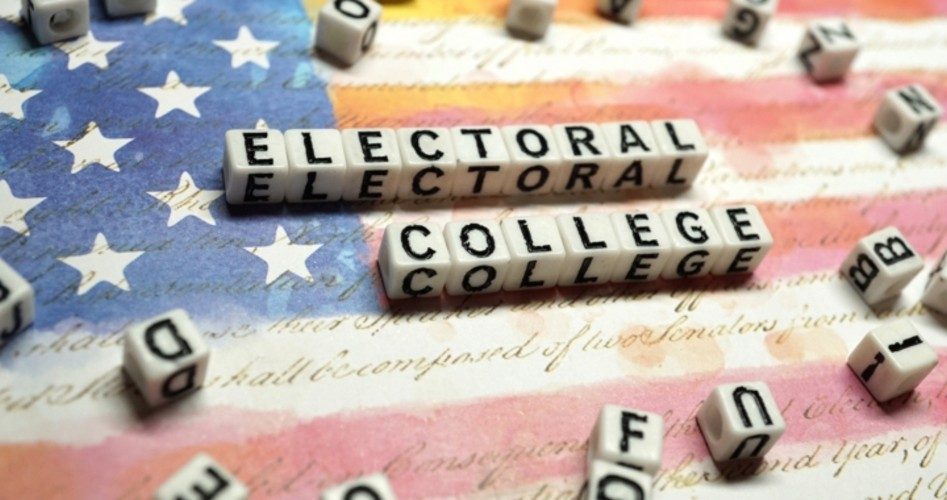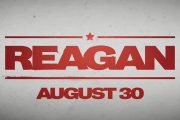
Along with much of the foundation of the country, the Electoral College is under increasing attack from various opponents on the Left. Fortunately, a documentary titled Safeguard: An Electoral College Story was released this week by Save Our States (a project of the Oklahoma Council of Public Affairs), which explains the history of the system of electing our nation’s president, and offers a powerful defense of it.
“The Electoral College is so misunderstood, and so subject to assumptions and half-truths,” said Trent England, executive director of Save Our States. England has also written a book, Why We Must Defend the Electoral College, which has also been released this month. England added, “But it’s a fascinating institution. I thought there was a good story to tell that can help Americans understand and appreciate the constitutional system we have through the Electoral College, which has become more interesting to Americans over the last four years.”
Steve Forbes is featured in the film along with various Constitutional scholars, and they explain how the Electoral College was created, and why. The 75-minute film emphasizes the relevance of the Electoral College in modern America.
The term “Electoral College” does not actually appear in the U.S. Constitution, but the provision that the president of the United States should be chosen by electors is explicitly provided for. Article II of the Constitution states, “Each state shall appoint, in such manner as the Legislature thereof may direct, a number of electors, equal to the whole number of senators and representatives to which the state may be entitled in the Congress.” In the early years of the Republic, the majority of the state legislatures simply selected the electors, but eventually all states passed statutes providing that the electors would be chosen by popular vote within the state. While Electoral College opponents complain that the popular vote does not elect the president, it would be more precise to say that the president is not chosen by a national popular vote, but rather by a state-by-state popular vote.
Today, there are 538 electors, with a majority — 270 — required for a person to be elected president. If no candidate receives a majority of the electoral vote, the House of Representatives then chooses the president, with each state wielding one vote. Presently, although the Democratic Party has more members of the House, the Republican Party controls 26 state delegations, with the Democrats holding the majority in 23, with one delegation equally split.
Following the 2000 presidential contest, in which Republican George W. Bush finished a very close second to Democrat Al Gore in the national popular vote, Bush was elected president with 271 electoral votes. Many Democrats argued that it was unfair for a candidate to lose the national popular vote yet win the White House through the Electoral College. More fuel was added to their rage in 2016, when Republican Donald Trump (officially) finished second to Democrat Hillary Clinton in the national popular vote, but won the Electoral College vote by a strong margin. (It should be noted that because of the votes of minor-party candidates, no candidate received a majority of the popular vote in either the 2000 or 2016 contests.)
In 2006, the National Popular Vote (NPV) compact was created to make an end-run around the Electoral College, since there is little likelihood that a constitutional amendment to formally abolish it could garner a two-thirds vote of each house of Congress and the ratification of three-fourth of the states. The NPV would make the Electoral College irrelevant by having states pledge to cast their electoral votes for the winner of the national popular vote, regardless of how the popular vote turned out in their state. The NPV’s plan would go into effect once enough states joined the compact to total at least 270 electoral votes. As it presently stands, enough states — states that ordinarily vote Democrat for president — have joined the deal to cast 196 votes.
The compact is of dubious constitutionality, considering that Article I, Section 10 of the Constitution explicitly forbids states forming compacts with each other without the consent of Congress, but as is often the case, what the Constitution states is of little concern to the Left if it interferes with their agenda.
John Koza, a staunch Democrat and the inventor of the scratch-off lottery ticket used in several states, is credited with launching the National Popular Vote (NPV) concept.
Back to the documentary. “The biggest problem we face is that people don’t know how the Electoral College works, and they’ve never thought through what the trade-offs are,” England said. Perhaps the biggest misunderstanding about the Electoral College is based on the idea that the United States is a democracy. England noted, “The Constitution does not establish a democracy. The Constitution is about establishing self-government in a way that protects individual rights, which oftentimes is directly at odds with democracy if the majority of the people want in some particular moment to interfere with the rights of a minority.”
Christian Adams, president of the Public Interest Legal Foundation, also defended the Electoral College. “Without the Electoral College, the presidency would be decided in Boston, New York, Chicago, Seattle, San Francisco and Los Angeles.”
Safeguard is available to view on Amazon’s Prime Video.
Image: Kameleon007/iStock/Getty Images Plus
Steve Byas is a university history and government instructor, and author of History’s Greatest Libels. He may be contacted at [email protected].



